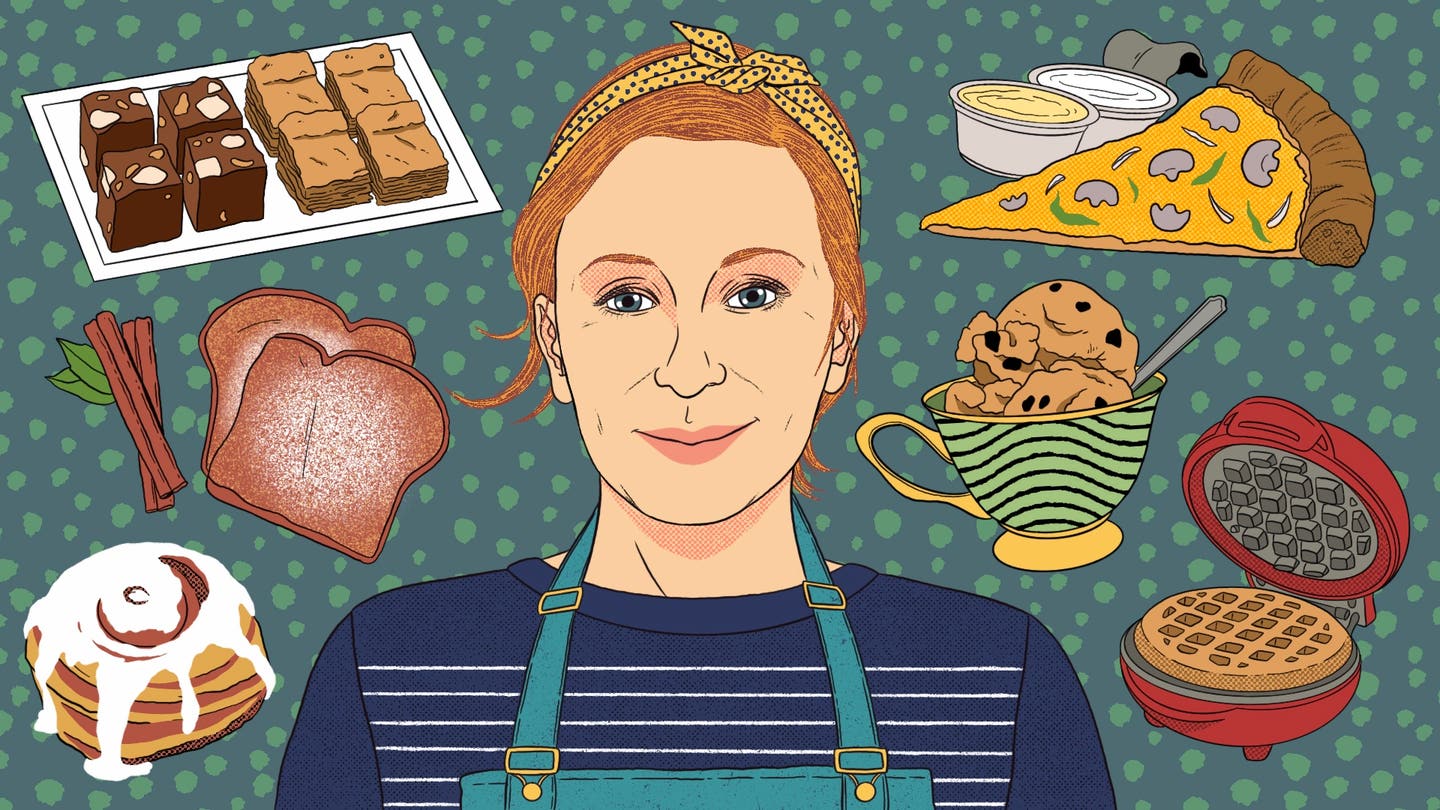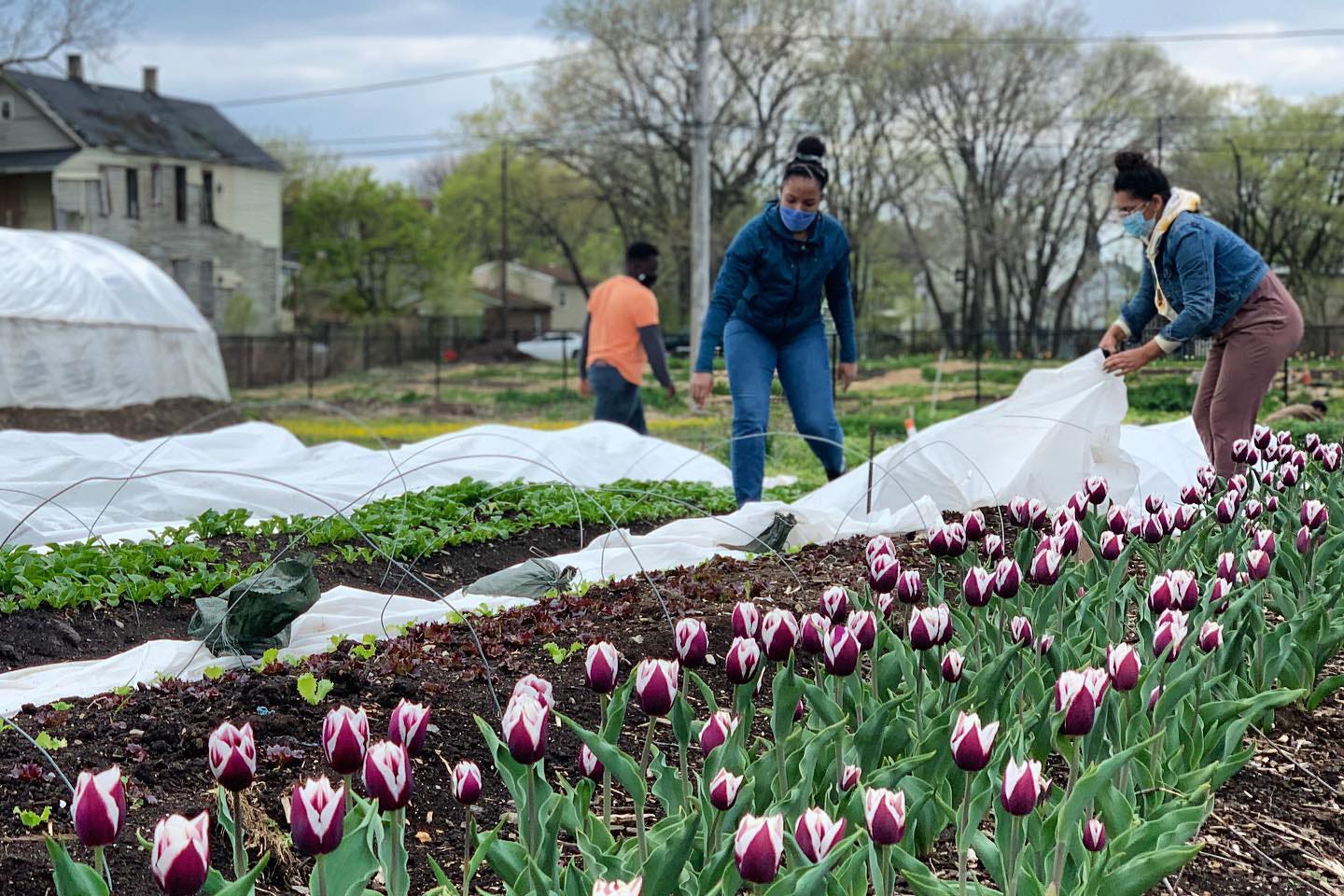
How a Neglected Plot of Land in Chicago Became Part of a Growing Urban Garden Movement
“We plant tons of food, but we grow people—and that’s the most long-lasting crop.”
When Malcolm Evans was nine years old, he noticed a commotion across the street as he exited the doors of his apartment building in Chicago’s Cabrini-Green neighborhood. An assortment of people, none of whom he had ever seen before, were congregating in a deserted lot—the site where the classic 1996 film Hoop Dreams had been filmed, but which the city had since all but abandoned.
For the next few days—which turned into weeks, then months—Evans watched quietly, off to the side, as local urban agriculturists Erika Allen and her father Will Allen cleared the land, laid out a plastic barrier, carried in truckloads of funky compost, and began building what he would eventually realize was a farm. When Erika, now a food justice activist, noticed a young Malcolm on the corner of that lot, she could see the apprehension in his eyes; newcomers to the neighborhood rarely stuck around. “I knew what was going on,” she said. “I told him, ‘Watch, I'll be back. Just watch.’”
Over the next few years Evans looked on as the farm began to flourish, noticing how patches of compost gave way to ripened tomatoes, and how the soil provided an ecosystem for worms and various insects. The project leaders, Erika and Will Allen, recognizing Evans’s curiosity, would answer his questions readily, instructing him on how to carefully harvest the crops during the growing season and encouraging him to take some of the vegetables home. It was a place where he felt appreciated; cultivating life, learning about hoop houses, and connecting with a network of farmers and volunteers who would become close mentors and friends. Besides, the farm was always open.
Growing up, Evans was often looking for an escape—a place away from home, a place to breathe. Usually, that meant downtown Chicago, but that was a whiter part of town where people would look at him funny, clench their purses, or cross the street. It was clear, he used to think to himself, that he didn’t fit in.
Now, 20 years later, Evans has a place to breathe. He is the farm manager of the Urban Growers Collective, a non-profit organization co-founded by Erika in 2017 (Will went on to win a MacArthur Genius Grant for his work on urban farming and sustainable food production) that operates eight farms on 11 acres of land across Chicago’s South Side, including the lot in Cabrini-Green.
“The garden was my safe zone, and we make and create these safe zones because that’s what folks need,” says Evans. Over time, he developed a relationship with the land—to weeding and tending the soil—which grew into a profound passion. When he suffered a gunshot wound to the head at the age 19, it was farming that got him through it by providing him an outlet during a turbulent time. His lineage, which traces back to parts of Mississippi before the Great Migration, instilled in him a persistent, lifelong calling to better understand the intricacies of farming. Something about the way he felt seeing that plot across the street all those years ago, growing food and feeding the neighborhood, ignited an innate curiosity.
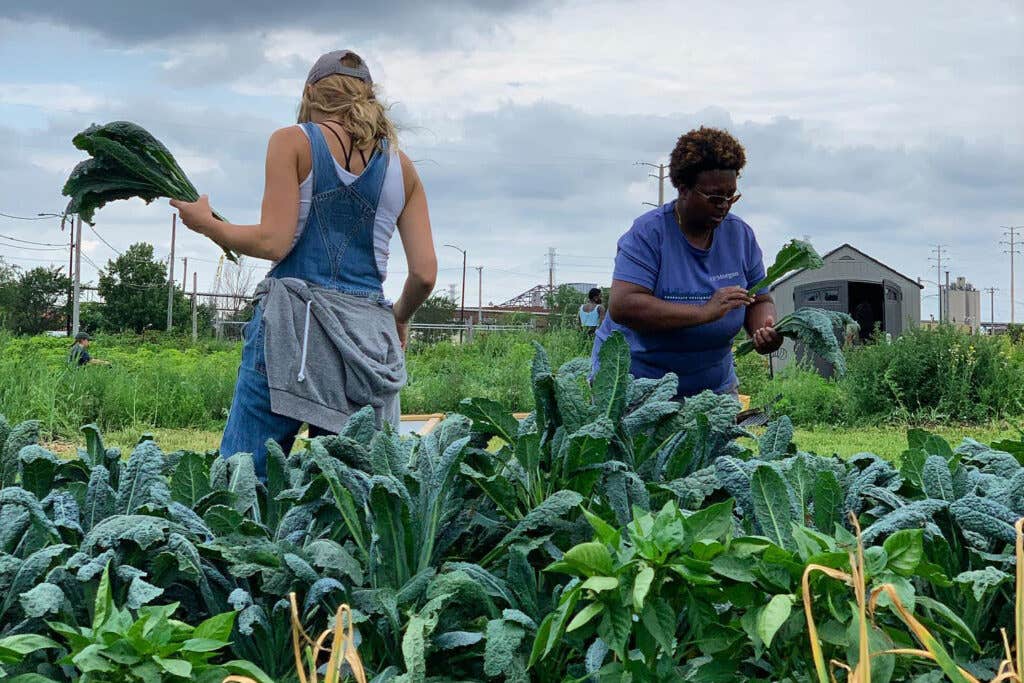
The Urban Growers Collective is rooted in two simple rules: show up, and stay consistent. The organization is part of a growing nationwide farming movement in which individuals are banding together to revitalize abandoned landscapes to address food insecurity, urban blight, and cataclysmic governmental failures.
Nearly four in 10 Black and Hispanic households with children are struggling to feed their families during the coronavirus pandemic, according to research by economists at Northwestern University. Thirty-nine percent of families are experiencing food insecurity, the highest rate seen in over a decade. This, many activists argue, is the byproduct of food apartheid, systematic and discriminatory policies that impede a community’s ability to access food.
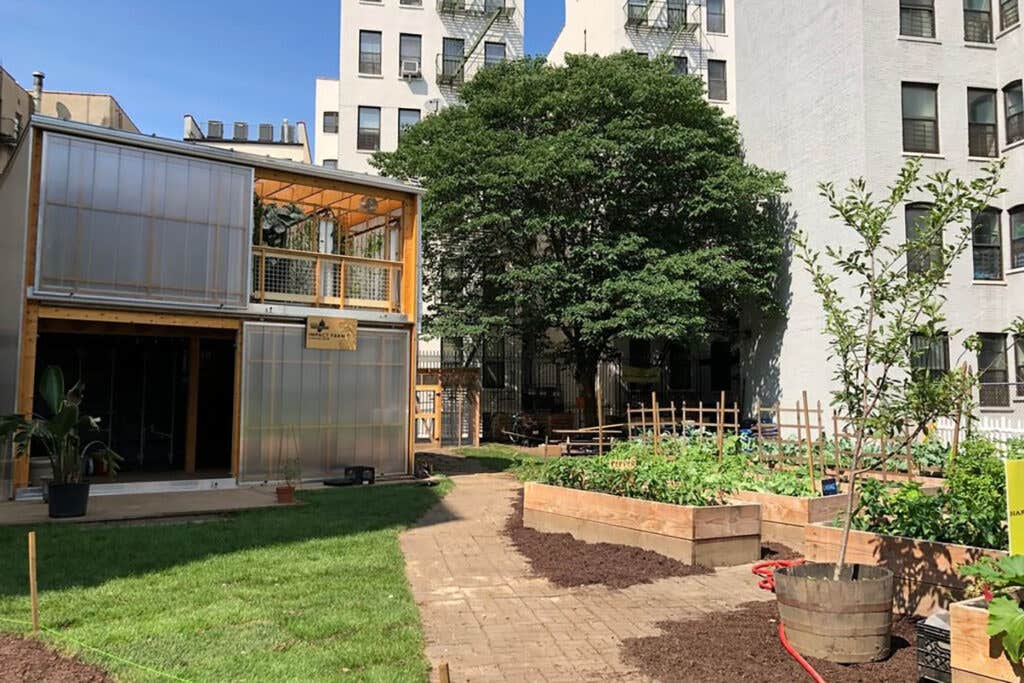
“Give us opportunity, give us land, and give us resources,” says New York City-based community organizer and food justice activist Karen Washington. “I don't want a handout, I want a hand-in.” Washington is the co-founder of Black Urban Growers (BUGS), an organization that builds community among Black farmers and gardeners.
“When COVID was starting, the first thing that the city wanted to do was close the gardens,” says Washington, explaining that New York City was scrambling for ways to save money amid growing budgetary concerns. But for Washington and other members of her Bronx community, that was a shortsighted perspective. “You’re asking us to close the gardens in communities that are being impacted and harmed by COVID the most, [when] people are standing in line trying to get fresh produce? Hell no.”
In response, Washington and 18 other residents formed the Bronx Community Garden Farm Hub, which devised ways to maintain these lifelines, regenerate revenue, and keep people fed despite the uncertainty of the moment. This included sharing tips on harvesting best practices, distributing seeds among farmers in the area, and donating produce to those in need.
“The idea that you're going to scoop up a farm that is supposed to be in service to the community is a reflection of how we think about Black people,” says Erika Allen, who is now Board President of the Chicago Food Policy Action Council, which advocates for policies that advance food justice and food sovereignty in Chicago.
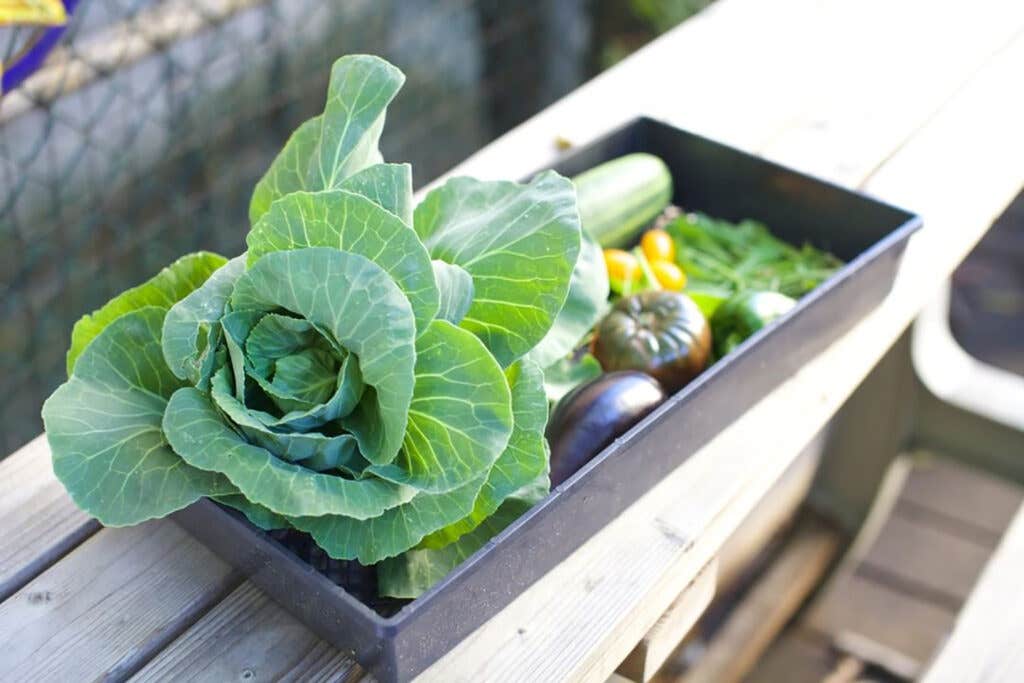
In 2011, Tony Hillary founded Harlem Grown, an independent non-profit organization that supports a dozen urban agriculture facilities across Harlem in New York City—including soil-based farms, hydroponic greenhouses, and school gardens. The organization celebrated its ten-year anniversary late last year. In reflecting on how the program has grown over the past decade, Hillary comes back to the food and, just as importantly, the people who have grown it.
“The savior complex permeates the nonprofit space. You parachute in and you lift out, and the community sees it coming a mile away. They're not going to buy into it,” he says. Instead, “we use food as a vehicle of change.” It was during the 2008 financial crisis that Hillary made his way up to 135th Street and Lenox Avenue one afternoon and found himself in front of a school building. Soon after, he stumbled upon an abandoned lot across the street and went to work.
“I showed up ten years ago, and haven't left yet. I’m there six, seven days a week, even in the snow, in the winter.” It’s hard work. And because the movement often gets romanticized, the visceral labor that is farm work, that is cleaning polluted lots, weeding, composting and harvesting is often forgotten. But Hillary recognized quickly the importance of showing up and showing out, day-in and day-out. The community responded in kind.
“We have a Chinese grandmother who lives in Bay Ridge, Brooklyn. It takes her two hours one way to come to our farm. She doesn't speak English. She translates with an iPad. She comes in every Wednesday and Saturday and teaches our kids how to make vegetable dumplings by hand, and how to pickle. She comes in and tells us every week, this is the garden where love grows,” says Hillary. “The fruits and vegetables are a metaphor. We do grow tons of food, we plant tons of food, but we grow people, and that’s the biggest crop we have and it's the most long lasting crop.”
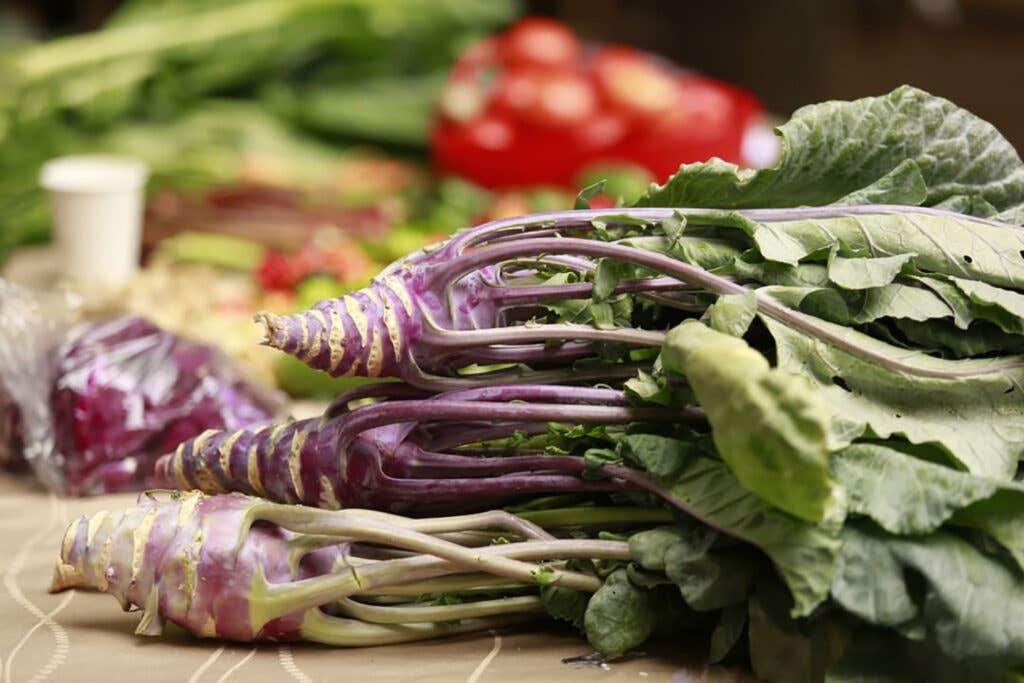
To date, Harlem Grown has donated more than 6,000 pounds of produce back to the community, and at the start of the pandemic the organization provided more than 35,000 dinners to homeless shelters across Harlem in a program they called Harlem Helping Harlem.
In the fight for food sovereignty, which is at the heart of many food justice movements working to battle food apartheid, we’re reminded of what is possible when people come together to better their community and believe in their land.
“We’re working in concert to figure out how we can shift the landscape and change what is possible for our people,” says Naima Penniman, Director of Education at Soul Fire Farm and co-founder of WildSeed, a Black and Brown-led farm. An intimate relationship with the land, Penniman explains, fosters and lays bare a larger Black ecological tradition.
“Resistance has literally been braided through our story here,” says Penniman. “Throughout our history as Black people on Turtle Island, on these lands—despite the overtly racist structures that were set up there—[there] has been creative resistance to organized labors and collectivized land and kinship commons. Before our ancestors got here, they had the foresight to gather up the seeds that they had been saving in their communities for generations and braid them into their hair.” With these conserved seeds, communities were able to grow foods like egusi melon, okra and black eyed peas from the African coast that became a part of the American horticultural tradition.
Soul Fire Farm in Petersburg, New York is an Afro-Indigenous-centered community farm that reaches over 160,000 people each year. Alongside a yearly harvest, it leads an assortment of food justice workshops, supports urban farms in neighboring cities, and educates residents on upcoming public policy initiatives. Soul Fire has provided both food and physical refuge for communities of color across the nation. It is, as Penniman calls it, “a green oasis amidst precarity.”
“When I walk onto the farm in the summer, you get this deep breath of fresh air when everything is blooming,” says Justina Thompson, Food Education manager at Urban Creators which supports the Life Do Grow urban farm in Philadelphia. “We have a butterfly bush with these really bright and vibrant purple flowers. The butterflies flock to it in the summer. They’re everywhere. Our bird feeders are full so when you walk into the barn you see all of these birds fly as soon as you make your presence known. And it's like, wow—there is so much life here.”
With the day-to-day hardships and systemic inequities that continue to disproportionately impact low-income Black and Brown residents, gardens have become an oasis in so many communities. This sense of refuge, perhaps, is what beckoned to Malcolm Evans all those years ago. “We've had people who've just laid down on the soil to rest,” says Erika Allen of visitors who stop by the farm in Cabrini-Green. “To grieve for all the lives lost.” There is something in the gardens that keeps people committed to the land—and to the resistance the land can embody.
Keep Reading
Continue to Next Story









